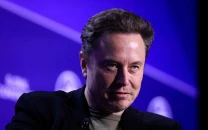Annual SPI spikes 2.21% led by gas, sugar
Weekly inflation rises 0.31% on surge in tomato, chicken prices

The Sensitive Price Indicator (SPI) for the week ended August 13, 2025 recorded a year-on-year (YoY) jump of 2.21% and a week-on-week (WoW) rise of 0.31%, reflecting inflationary pressure in essential commodities.
The SPI, which tracks prices of 51 key items across 50 markets in 17 cities, serves as a short-term gauge of consumer price movements.
On a weekly basis, the price increases were led by key perishable and protein items. Tomatoes saw the sharpest surge, jumping 12.62%, followed by chicken (4.68%), eggs (2.11%), onions (1.98%) and garlic (1.60%).
Among staple commodities, wheat flour rose 1.44%, gur (jaggery) 1.04% and pulse mash 0.52%. Firewood edged up 0.17%, adding to household energy costs.
Conversely, notable declines were recorded in bananas (-2.52%), potatoes (-1.65%) and pulses, including pulse gram (-0.84%), pulse moong (-0.73%) and pulse masoor (-0.29%). Other items registering minor dips included liquefied petroleum gas (LPG, -0.36%), 1kg vegetable ghee (-0.10%), powdered salt (-0.06%) and Irri-6/9 rice (-0.04%).
Out of the 51 items monitored, prices of 17 items (33.33%) increased, nine items (17.65%) fell and 25 items (49.02%) remained unchanged compared to the previous week, underscoring a mixed but slightly inflationary trend in the food and household goods market.
On an annual basis, the SPI's 2.21% rise was driven by steep hikes in non-perishable items and services. Footwear prices surged, with ladies' sandals rising 55.62%, while gas charges for Q1 rose 29.85% and sugar prices climbed 22.83%.
Other significant YoY increases were seen in beef (13.54%), pulse moong (13.32%), 2.5kg vegetable ghee (11.97%), gur (11.65%), firewood (11.41%), 1kg vegetable ghee (11.25%), cooked beef (8.86%), cooked daal (8.22%) and diesel (7.38%).
However, the annual comparison also highlighted a substantial relief in some essential food items. Onion prices dropped 52.10%, tomatoes 34.33%, garlic 26.71%, pulse mash 22.62% and wheat flour 19.41%.
Lipton tea prices eased 17.93%, potatoes 17.80% and pulse gram 10.88%. Notably, electricity charges for Q1 were down 10.02% and LPG prices slipped 5.16%, offering some respite to consumers.
Across consumption quintiles, the WoW SPI change was uniform at around 0.31-0.33%, indicating the inflationary impact was broadly felt across income groups. On a YoY basis, the lowest income group (Q1) experienced a 2.22% rise in prices, while the highest quintile (Q5) saw a smaller increase of 1.46%.
The data suggests that while headline inflationary pressure remains relatively contained compared to past years, certain essential items — particularly protein-rich, condiments and some utilities — continue to post strong price growth, which could weigh on household budgets if the trend persists in the coming weeks.






















COMMENTS
Comments are moderated and generally will be posted if they are on-topic and not abusive.
For more information, please see our Comments FAQ